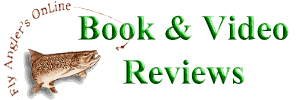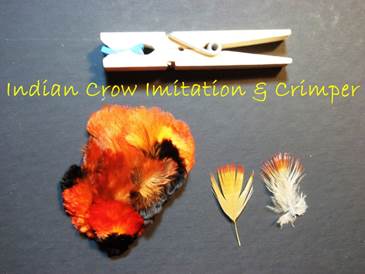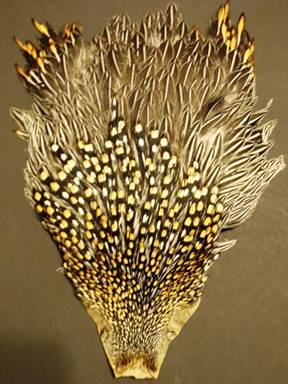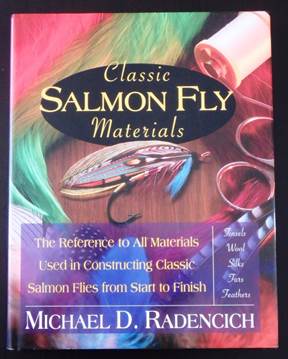- You are here:
- FAOL Home >>
- Articles >>
- Reviews >>
- Book and Video Reviews

Individual taste in books varies as much as the favorite rod or fly. With that in mind, we hope to review books and videos from the ever-growing fly fishing world, and share them with you. Books will be the best of all worlds, new and old. Many of the old books are now available in reprint, and the wisdom contained is timely today. Others can be found in second-hand book stores, or by mail order dealers. As we find videos we feel are outstanding they will be included. Be assured, reviews are based on what we have actually read or viewed, and due to that fact, may not appear weekly.
CLASSIC SALMON FLY MATERIALS
Materials:
In the previous chapter, I discussed hook and gut loop and now we will look at feathers. At the beginning, it did sound somewhat intimidating and overwhelming to acquire all the necessary materials. I had to learn how to handle each material and tie it in on the hook with a limited amount of feathers (but also with limited budget!). More overwhelmingly, what if I gave up the entire subject? Even from the beginning, I felt this would be either achievement or zero. Anyway, I conquered those fears. Now I'm really comfortable to work with expensive feathers.
I think feathers themselves attract modern tyers. Some are indeed hard to find and often expensive, but when those finally come to our hands, it's like collection! I myself often check websites that handle those exotic feathers. I would be about to drool and tempted to click and buy! But not really. It's such a great indulgence.
|
|
Alternating and substituting materials are also interesting aspects of dressing Atlantic Salmon Flies. Initially I practiced with Ringneck pheasant neck feathers dyed to imitate Chatter and Indian Crow. Dying feathers is my next pursuit. Speaking of Indian Crow substitute, do you know this little device?
 |
Review:
Compared to his "Tying the Classic Salmon Fly "(1997) and "Twenty Salmon Flies" (2010), this another superb book done by Mike Radencich (Stackpole Books ISBN-13: 978-0-8117-0197-6, ISBN-10: 0-8117-0197-2) has more emphasis on materials, that should cover most of patterns, with more detailed & focused pictures & diagrams and with much deeper explanations than those in two aforementioned books. But also it still covers tying instructions.
|
Before I decided to purchase this one, I checked it out at a book store. Honestly it didn't interest me at that time. Looking back later on, I wasn't in the level to pay detailed attention to and grow interests in materials. I was looking for books with more tying instructions at that point.
After I gained some skills and experience, I happened to come across this book again in the book store. Now I saw this book with some different and mature viewpoints. I felt I would need this book for a more and better understanding of materials. It was simply due to my own pure passion and eagerness that "I want to learn and pursue more about Atlantic Salmon Flies!!"
Just as other books by Radencich, this book also hosts some greatest fly-tying photography. Especially the last two chapters are beyond description of superb!! Some entire skins and feathers of exotic bird species are great and they can be the references if we happen to purchase those. Then I really thank the effort of reproduction of early- and mid-19th century books. Nowadays, we could find these images somewhere online but I bet those images would never be as good as those in this book!!
In my interpretation, tying instruction sequences in this book is meant to put together all the materials he has discussed. So if newbies are looking for a tying instruction book, this would be a bit too difficult and challenging. It might be even intimidating as some exotic materials should look alien for novices!!
Satoshi Yamamoto, www.leftyanglerandflies.com, is a guide and a fly-dresser in Livingston, MT.


